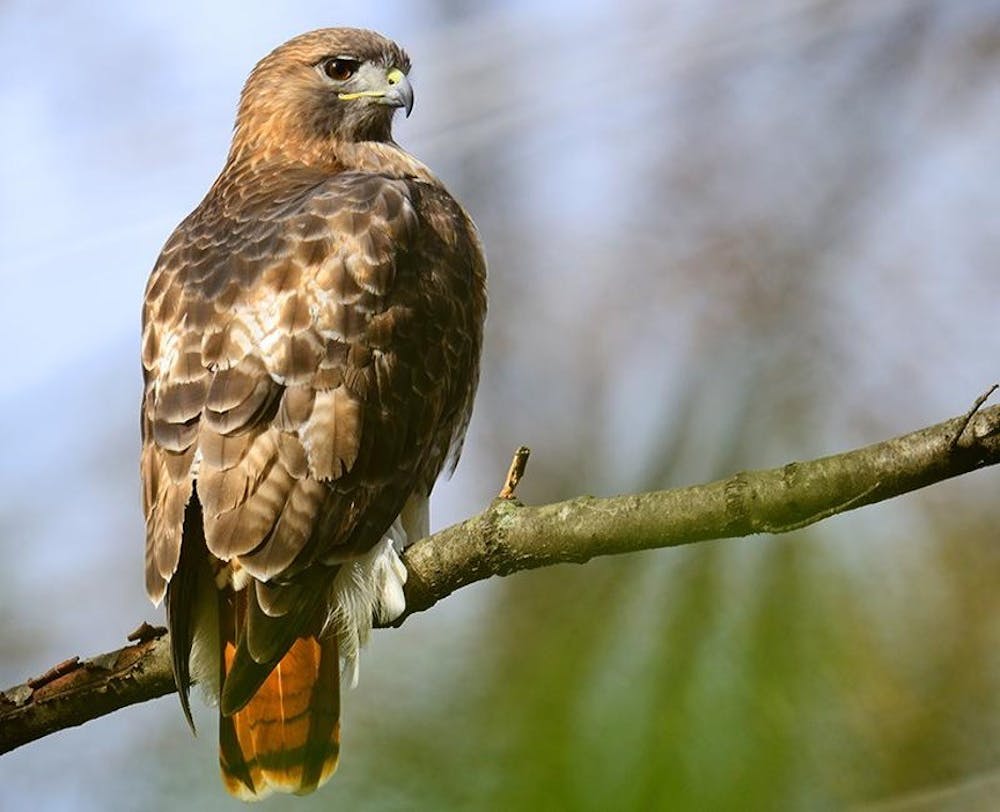Red-tailed hawks live in North and Central America and often find their home in many environments such as plains, farmlands, open woodlands and deserts. They help farmers by picking off rodents and moles that disturb their crops by swooping down and grabbing them, exposing their bright yellow feet. You may have even seen a red-tailed hawk perched on an electricity post proudly puffing out its white and brown spotted chest as you drove by. Perhaps you have seen its iconic red tail as it relaxes on a branch in your neighborhood. Even if you are not actively searching for this bird, you cannot escape its famous call.
The red-tailed hawk is used in thousands of Hollywood productions to draw the viewer into the movie’s setting. An iconic use is in western cowboy movies, where its screech echoes through the desert. You may have even heard the red-tailed hawks’ call mask the symbol of our nation, the bald eagle. Its piercing call drives fear into rodents and connects us to modern media and American symbolism.
The red-tailed hawk surprisingly makes an appearance as Shippensburg’s official mascot. Distorting its stern and powerful look into a brighter red and cartoonish version of itself, it's no secret that if you compare the look of the red-tailed hawk and the appearance of Big Red, the red-tailed hawk is the last thing you would guess it is based on. However, the power and endurance the hawk exposes as it thrives in its environment make it a perfect mascot for a school of students showing just the same to get their degree.
If you try to spot a red-tailed hawk in the wild, the best thing to look for is its wings. Red-tailed hawks have a unique pattern under their wings that is exposed when the sun hits on their feathers. There will be two brown triangle-like shapes left and right of the hawk’s wings near its head. The red tail can also be a dead giveaway to determine if the bird is a red-tailed hawk; however, a juvenile red-tailed hawk does not present this color on its tail feathers, rather showing a more spotty white and brown coloration similar to its chest. Of course, if you allow the hawk to call, you will be able to determine immediately what species it is.
Red-tailed hawks are adapted to live in many environments as well as living alongside humans. You may have seen one swoop down and catch a songbird or rodent in your area, or simply perched on a tree near your house. With around 2.5 million red-tailed hawks soaring through North America, it is common to spot one in the wild assisting in rodent control or searching for its next meal high in the sky.


The Slate welcomes thoughtful discussion on all of our stories, but please keep comments civil and on-topic. Read our full guidelines here.